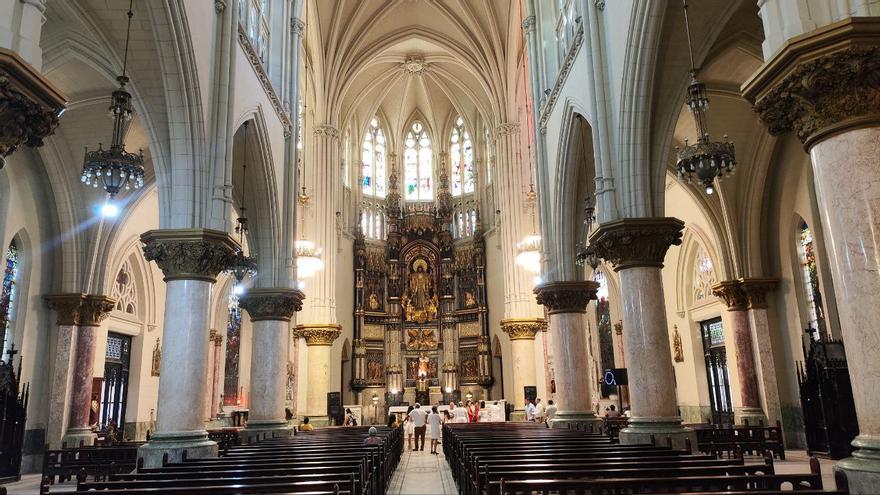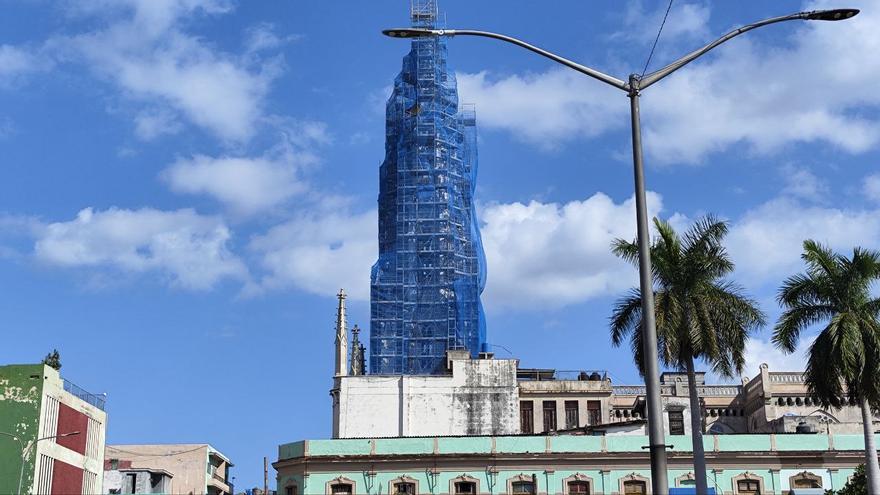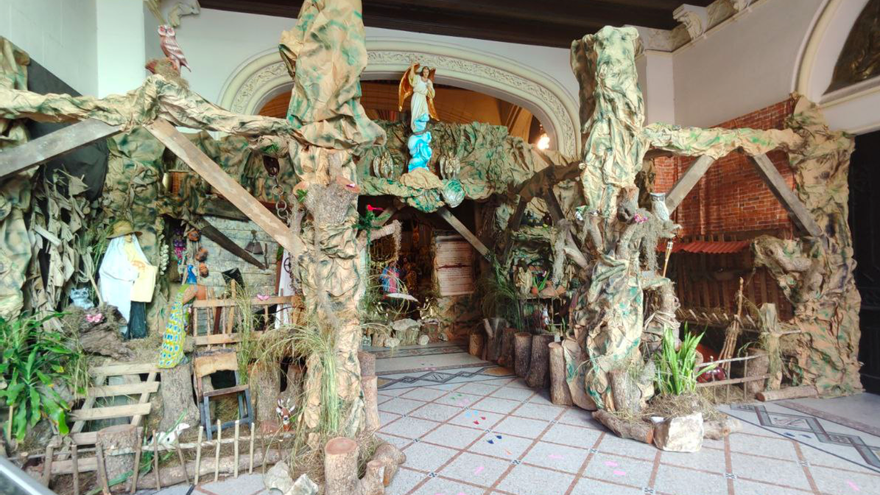
![]() 14ymedio, Juan Diego Rodriguez, Havana, 22 November 2023 –Dust-free altars, new paint and luminous stained glass. One of the most iconic buildings in Central Habana, Sacred Heart Church on Reina Street is celebrating its centenary after a major renovation. Though the scaffolding has been removed and the interior is spotless, questions remain. Who financed the project? How much did it cost? Given the friction between the two in recent years, did the government make the process difficult for Jesuits, who have been in charge of the building since its consecration in 1923?
14ymedio, Juan Diego Rodriguez, Havana, 22 November 2023 –Dust-free altars, new paint and luminous stained glass. One of the most iconic buildings in Central Habana, Sacred Heart Church on Reina Street is celebrating its centenary after a major renovation. Though the scaffolding has been removed and the interior is spotless, questions remain. Who financed the project? How much did it cost? Given the friction between the two in recent years, did the government make the process difficult for Jesuits, who have been in charge of the building since its consecration in 1923?
Jorge Luis Rojas, the priest in charge of the renovation, is tight-lipped. When asked about the project, he declines to give details, saying he is not authorized to reveal who paid for it, or if Havana’s Office of the Historian provided technical advice or finanancing.
However, the quality and pace of construction — the project took three years from start to finish, in time for the centennial — suggest that it was the Catholic Church itself, through its financial associations, and the Jesuits who provided the necessary funds.
Two German organizations which routinely pay for construction costs in Cuba on behalf of the Catholic Church are Adveniat and Kirche In Not (Church in Need), which describe themselves as “donation-based intermediary charitable institutions.” However, 14ymedio was unable to obtain confirmation from Jesuit sources in Havana that these organizations were involved in the project.

When asked about it, vendors selling prayer cards at the building entrance reply tersely, “It’s being done with church money.”
What is certain, however, is that the religious order needed government permission and resources to carry out a work of this caliber. The final phase of construction is now underway outside. The iconic tower, one of the tallest structures in the capital, remains covered by scaffolding and protective mesh.
The Reina Street church, as it is known to locals, is not only one of the most sumptuous religious buildings in the city, it also dared to hang semi-public Christmas decorations during Cuba’s Special Period in the late 1990s.
Built a century ago by the then all-powerful Jesuit order, the construction was made possible by contributions from important Cuban families. Fr. Luis Gogorza and the architect Eugenio Dediot oversaw the project.

Fidel Castro persecuted and later disbanded several organizations that met at the church both before and a few years after the Cuban revolution. One of them was the Catholic University Group, founded by a Jesuit priest, Fr. Felipe Rey de Castro, in 1927. It became a thorn in the side of Fulgencio Batista after publishing a survey on the deterioration of the country during his presidency. It later presented a problem for the Castro regime when many of its members arose in protest – taking up arms – in response to the island’s drift towards communism.
There is little to remind visitors of this past in the old neo-Gothic church. In the midst of a crisis that affects every aspect of daily life, Havana residents visit the church to be impressed by the stained glass windows and, perhaps, to forget that the rest of Havana, with the exception of a portion of its historic center, has no benefactor restoring it.
____________
COLLABORATE WITH OUR WORK: The 14ymedio team is committed to practicing serious journalism that reflects Cuba’s reality in all its depth. Thank you for joining us on this long journey. We invite you to continue supporting us by becoming a member of 14ymedio now. Together we can continue transforming journalism in Cuba.
